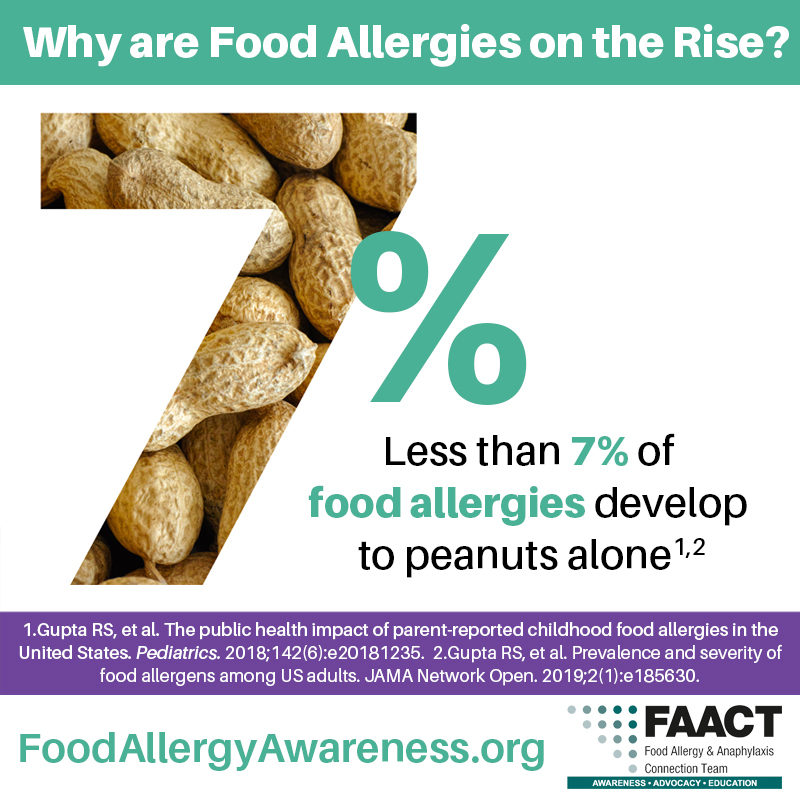Why Are Food Allergies On the Rise?
Subcategories

Why are food allergies (and other allergic conditions) on the rise?
The rise of food allergies is likely multifactorial in nature and cannot be explained by genetics alone. Our modern, industrialized environment has likely increased our susceptibility. In addition, the change in feeding guidelines in the United States in 2000 (delaying the introduction of certain foods) may also have played a part in the ongoing rise of children with allergies to food.
Scientific evidence in the last decade points to clues in our way of life that may have changed and contributed to increased food allergy risk. The Hygiene Hypothesis suggests that as our environment has become “cleaner,” some children’s immune systems - left with decreased invaders to battle - may overreact to new food proteins and create allergic responses instead (source). This allergic response is also more likely if the infant is exposed to the food proteins in an unexpected way: not through eating and through the gastrointestinal system’s immune system, but when food particles and proteins are introduced through dry or broken skin. Concerns that skin exposure sensitizes (in other words, when the immune system registers a substance as a threat and produces specific antibodies), while consumption of food allergen induces oral tolerance, have generated numerous research papers (source). This theory of allergy development called the Dual Allergen Exposure Hypothesis helps explain why eczema is the leading risk factor for developing a food allergy. Eczema can cause broken-down, itchy skin and can allow for a point of entry for food proteins. If the body is first and repeatedly introduced to foods through the skin, as opposed to through the mouth and GI tract, it may increase the likelihood of sensitization to that food, and possible allergy. The concept of sensitization is very different from a food sensitivity, which is not an immune mediated response.

